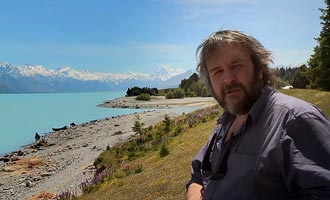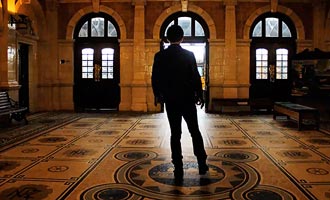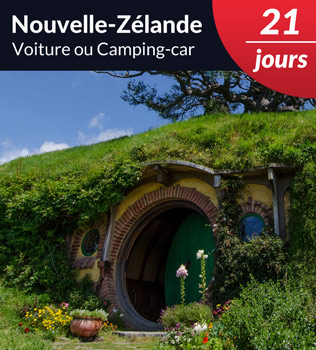
How to Discover New Zealand's Culture?
Please contact us and we will help you to organize your trip! It's free and without commitment.
- Read the post
- Details
- Advices
Presentation.
- 1A Great Culture to Discover.
- 2A Cultural Melting Pot.
- 3First Encounter With the Maori Culture.
- 4Rugby Is a Religion in New Zealand!
- 5A Stunning Architecture.
- 6Art Between Tradition and Modernity.
- 7The Kiwiana From New Zealand.
A Great Culture to Discover.

Peter Jackson's trilogies revealed the country to the general public.
The public usually associates New Zealand with the Allblacks rugby team or the movies by Peter Jackson. One can say that New Zealand's culture is still largely unknown.
I do not know how the Kiwis appreciate the fact we always associate their country to The Lord of the Rings trilogy? New Zealand, however, does not need these movies to stand apart!
One could be tempted to summarize New Zealand to a European and Maori melting pot. But that would ignore the large Asian community and many minorities from the Pacific.

A modern sculpture influenced by the culture of the Pacific.
All these influences are represented in the everyday life, but one must visit museums to fully understand the history and culture of the country.
Fortunately, the people of New Zealand have their own idea about the way a museum should be built. You can forget the austere galleries and replace them with large spaces where quality override quantity. The great Te Papa museum of Wellington perfectly illustrates this philosophy.
Wide alleys host modern presentations with many videos or educational attractions you can touch with your hands. Entrance is, of course, free (as often in New Zealand).
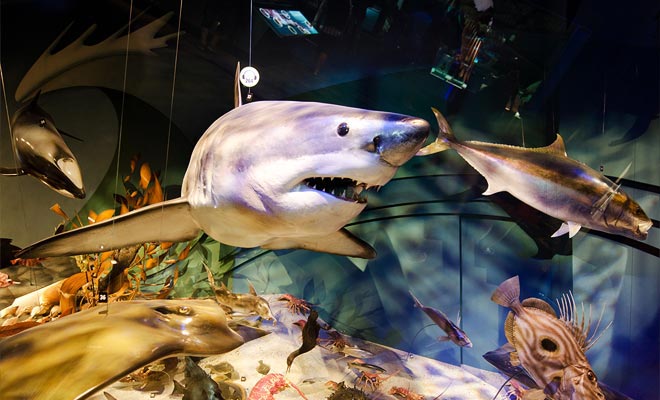
Most of the country's museums are free.
Trying to present the culture of an entire country in one article would be pretentious if not completely ridiculous. Kiwipal does not aim to replace Wikipedia. I will focus only on the emblematic aspects of the Kiwi culture. This living culture that you will encounter during your stay in the country (there are great chances for you to fall in love with it).
A Cultural Melting Pot.
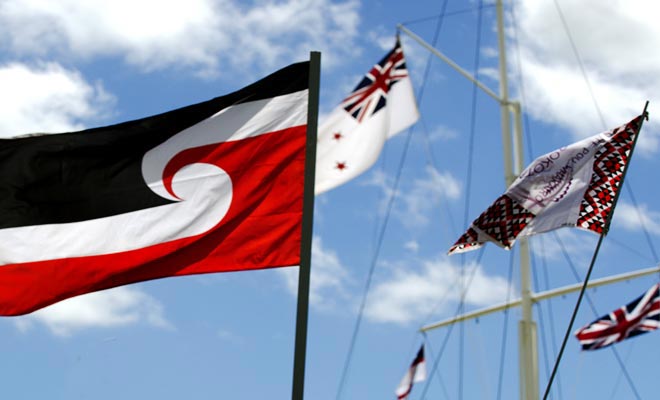
The Maori flag showed during the national holiday.
New Zealand was colonized by the British, and therefore the population speaks mainly English (with a unique accent). This is not the only official language: Maori and sign language are also recognized.
After a long decline, the Maori language is now spoken by only 4% of the population. But since a decade, the language is more and more popular at school, and even a television channel is now fully presented in Maori.
On the religious level, New Zealand has kept Christian values imported by early British settlers. Anglicans, Catholics and Presbyterians represent 38% of the population.

A church with Maori colors, a symbol of the melting-pot.
Atheism is on a par with Christianity, while the rest of the population observes Maori beliefs, Muslim, Jewish or Buddhist.
All these religious communities live together in peace in New Zealand.
If you want to learn more about the New Zealanders, I invite you to read my article about the Kiwis. Maoris account for 14% of the population, and their culture is without a doubt the most interesting of the country.
First Encounter With the Maori Culture.
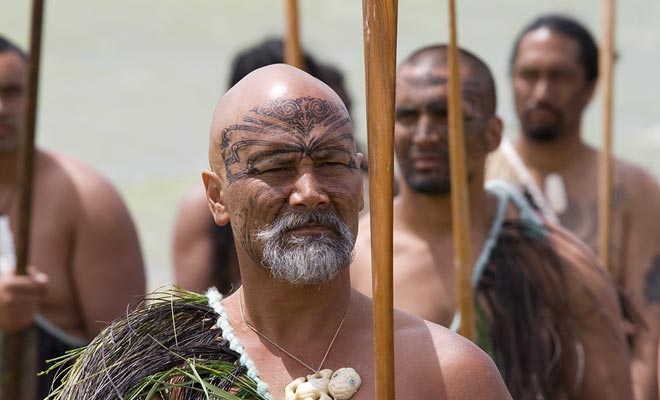
The Maori are proud of their Polynesian origins.
This is essentially the Maori culture of Polynesian origin that attracts visitors to New Zealand. While most Maoris are now living according to Western customs, the attachment to the tribe remains strong, especially in rural areas.
Formerly the honor and prestige of the tribe had to be defended at all costs. The survival of the community required a constant struggle to control a land and its natural resources.
Speaking literally of a "warrior society" would probably be an exaggeration, but one must remember that Western settlers paid a heavy price in human lives before finding a middle ground with Maoris.
Being truly essential for the community, tribal houses Whare nui are sometimes open to visitors.
The most famous one is located in Waitangi, on the very same place where the treaty was signed that ended the hostilities with the British settlers.
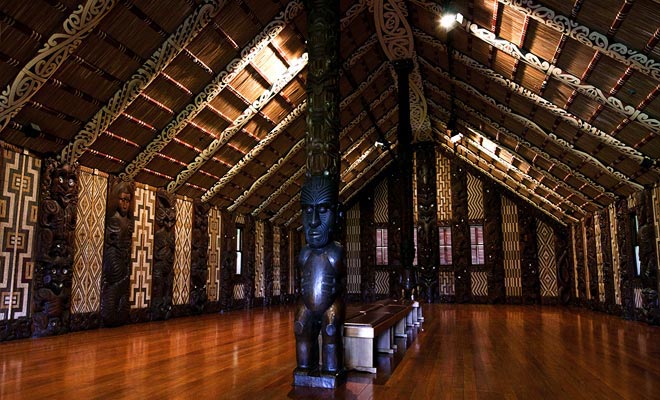
Each carved pillar of the Whare Runanga represents a tribe.
I must confess that I'm not a big fan of the Maori shows which one can attend in the whole Rotorua region.
Exclusively targeting tourists, they allow visitors to discover the Hongi, the Hangi or the famous Haka before attending a dinner show.
But if you really appreciate the Haka of the AllBlacks, it is far better to discover its meaning by visiting the excellent museums of Auckland and Wellington instead.
Spectacular in its form, this ritual dance is supposed to deprive the adversary of his life force (the dance is even being taught at school!).

The moko is a ritual facial tattoo reserved for Maori.
If you expect to leave the country with a Maori tattoo, you are lucky because the modern methods have now replaced the original ritual incision made with a bone!
Assuming you are interested getting a facial tattoo, please remember that it is not possible. A moko tattoo symbolizes a high rank within a tribe, and a Paheka like you (a foreigner) does not deserve the great privilege and honor to wear it.
There are still some community tensions in New Zealand, but if there is one area where Maori and Pahekas find themselves fully united, it is rugby!
Rugby Is a Religion in New Zealand!
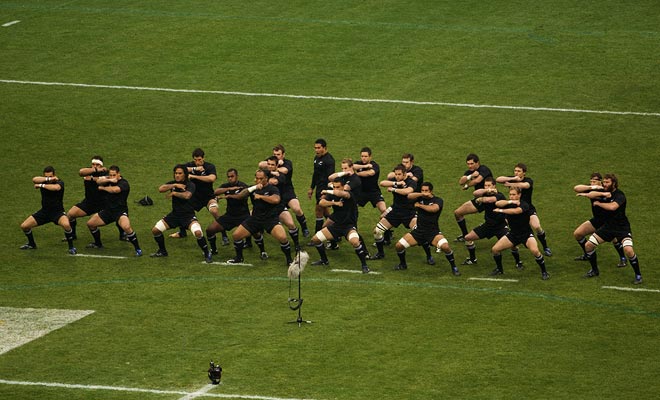
The Allblacks hold the record of international victories.
Rugby is written with a capital letter in New Zealand and is almost a national religion. The Allblacks may have won the World Cup again in 2015, yet they still cultivate simplicity and proximity with the population.
Taught from primary schools up to university, rugby has thousands of teams and 600,000 adherents for a country of only 4.5 million inhabitants ...
One can say that this discipline is eminently suitable to the Polynesians people.
This is not the only sport that interests the Kiwis.
New Zealand is a country of sailors and it holds the record for the highest number of boats per inhabitant in the world.
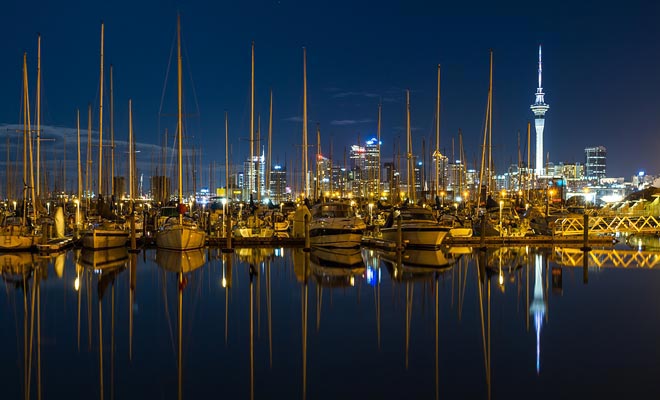
Most New Zealanders own a boat.
When they are not busy watching a rugby match or gone fishing, some Kiwis are involved in a very special passion: extreme sports. The bungee jumping was inspired by an ancient custom of the Vanuatu islands. The Kiwis were the first to turn it into a tourist attraction. One must say that the New Zealand's law authorizes almost anything, as long as the participant sign a discharge.
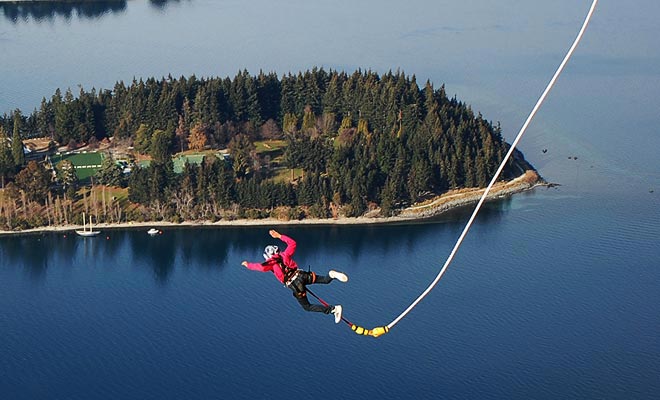
Bungee jumping was invented in New Zealand.
To recover from strong emotions, nothing beats a good barbecue with friends.
More than just a cooking method, the barbie (BBQ's nickname in New Zealand) is primarily a lifestyle. Huge portions and friendly welcome can be expected even when it rains (remember that bad weather is never a valid excuse to cancel an invitation...).
As for the Hangi,, it is somehow the Maori barbecue. The food is cooked on a bed of coals covered with earth.
The city of Rotorua, which has the largest Maori community in the country will give you the opportunity to taste this local specialty.
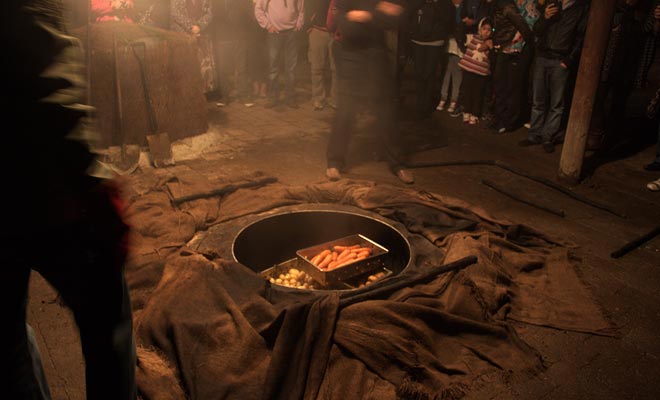
The Hangi is the traditional Maori cooking.
People rarely lacks of space in New Zealand. This is why most houses rarely have more than one floor and often possess a garden for the weekend barbecues. The construction style, however, varies all along the country.
A Stunning Architecture.

The cities are marked by the influence of colonization.
New Zealand cities do not lack charm and the old Victorian houses continue to be carefully maintained by their owners. With the restoration of old cars, it is almost a kind of national sport.
During the colonization era, Westerners hoped to recreate a vivid image of their motherland. The architects were largely inspired by a Victorian style popular at that time. The gold rush of the 1860s has given them the means to achieve their ambitions. But it was still necessary to deal with the earthquakes of the country! Many buildings of the North Island are constructed with Kauri Wood as prime material in order to withstand earthquakes.
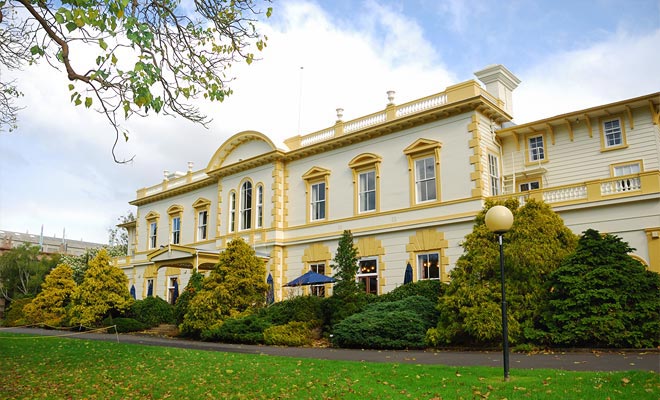
The former parliament is built of wood to resist earthquakes.
The Chinese gardens that multiply in many cities illustrate the importance of the third wave of immigrants.
New Zealand has a cosmopolitan, open and tolerant society. These qualities being naturally present in the country's culture.
The Maori architecture, Wharenui painted with bright colours, are particularly photogenic and admired by tourists.
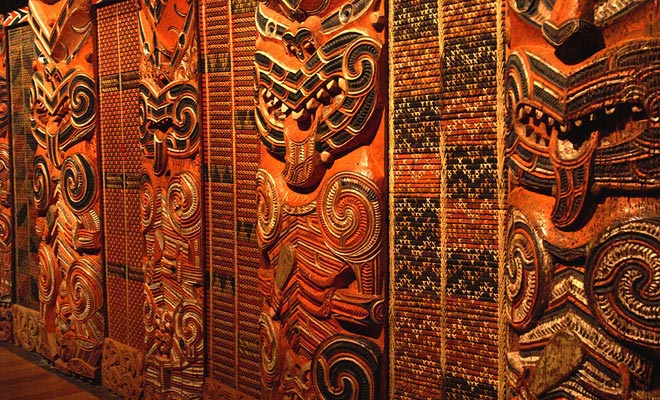
The Maori sculpture is one of the most refined of the Pacific.
Gradually, Maori style influenced modern architecture and it's a safe bet that the revival of Christchurch will reflect this evolution. Meanwhile, the Kiwis have demonstrated originality by building a cardboard cathedral to replace the one destroyed by the great earthquake of 2011.
Art Between Tradition and Modernity.
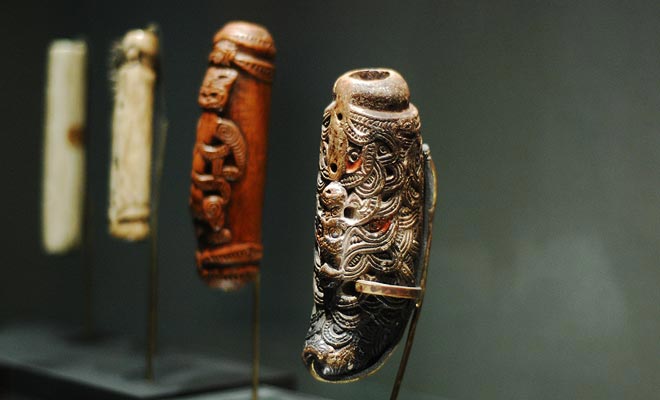
Maori culture and traditions are exhibited in museums.
Busy to make war against the Maori tribes while building their own cities, Westerners had little time to devote to the arts. The situation has evolved, of course, with peace, but the awakening took some time.
Before Peter Jackson's trilogies, Jane Campion had already won the Golden Palm at Cannes for her acclaimed “Piano Lesson”.
But still now, the film that has most strongly impressed people unquestionably remains “Once were warriors” by Lee Tamahori.
As I said in the introduction to this article, I will not list all the actors and writers from New Zealand.
The Kiwi literature began to be known abroad after having long been confined to novels by Katherine Mansfield. (this great author being often studied at school).
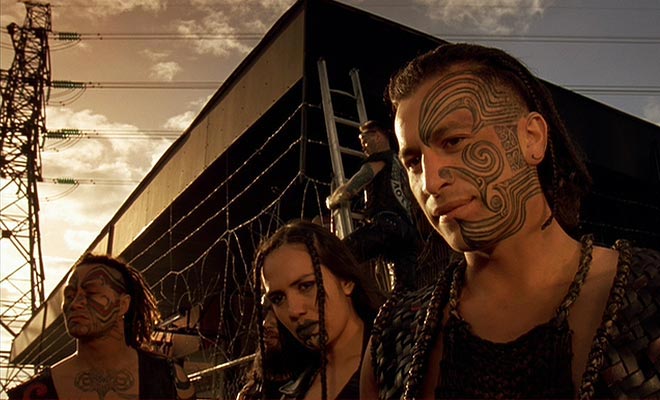
The soul of the warriors is a film that marked the spirits.
Speaking about music, there is a good chance you've never heard a single note from New Zealand.
Perhaps the names of the Chills or Verlaines from Dunedin will bring back memories to those who were teenagers in the 80s...
However, the music scene is well alive and strongly influenced by the cultures of the Pacific.
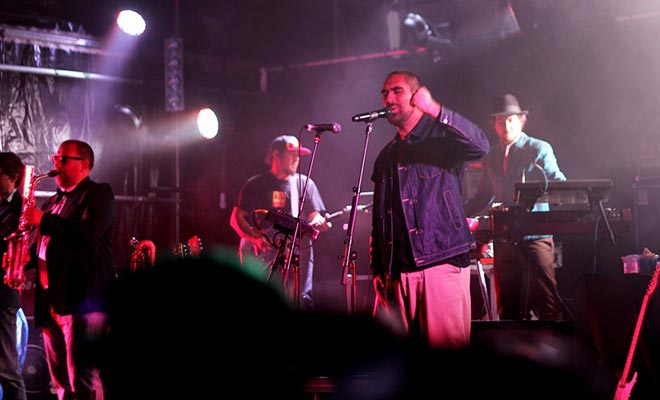
The musicians are influenced by the rhythms of the Pacific.
In a totally different register, soprano Dame Kiri Te Kanawa is a star widely known and appreciated by opera lovers. But the ancients Maoris had not waited for the colonization to prove their prodigious artistic talents. The carving techniques on wood and basketry had reached a level of incomparable finesse. Dances and ceremonies were also very impressive and still are nowadays!
The Kiwiana From New Zealand.
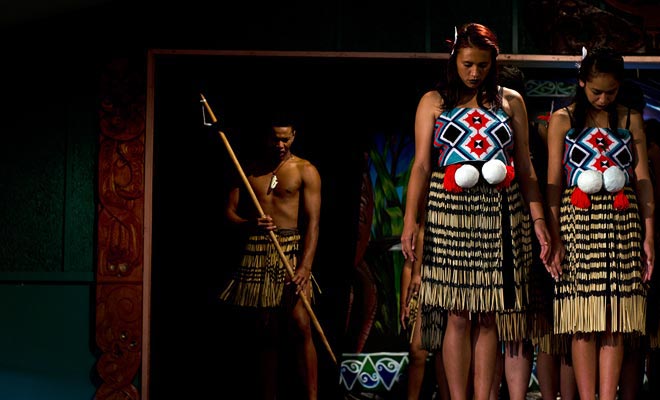
Maori shows are concentrated in the Rotorua area.
I hope this mere glimpse was enough to introduce you to the great culture of New Zealand. Of course, so many art forms were ignored that you'll discover by yourself during your stay.
Despite the success of their economic system and their numerous renowned artists, New Zealanders are somehow still complexed by several centuries of isolation.
The richness of their own culture always seems lower to them than those of other countries.
An artist or an athlete is often supposed to become successful abroad first, then only he will be recognized by his own.
This is why the All Blacks are considered as the ambassadors of the country and adulated by the entire population.
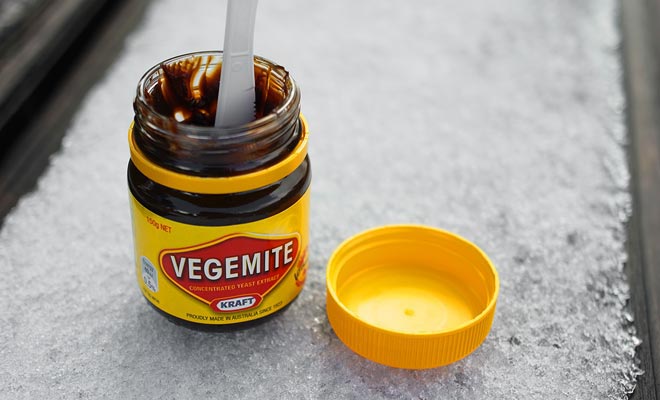
The marmite (or the Australian Vegemite) is part of the Kiwiana.
I must add a few words concerning the Kiwiana, this expression refers to emblematic objects, specific to New Zealand's popular culture..
Marmite (or Vegemite), Hokey Pokey... these are words that you have probably never heard in the rest of the world, but which have a great importance in the heart of every New Zealander.
In a country where one does not take itself seriously, the simple things are often the most popular. It's impossible not to admire such great people!


Questions & Answers.

What can I do for you? Questions about culture are often related to the traditions. Being myself Kiwi, I can give you great advice on the subject.
- All topics ... 25 answers in total
- Symbols and Traditions 7 answers
- Multicultural Society 3 answers
- Haka 3 answers
- Museums 3 answers
- Local Food 3 answers
- New Zealand in Movies 2 answers
- Rugby 2 answers
- Tattoos 2 answers
Symbols and Traditions
- Will New Zealand change its flag?
The 2016 referendum proposed by Prime Minister John Key showed that the kiwis are attached to the Union Jack and the flag will not change.
- What does the New Zealand flag represent?
The Kiwi flag represents the British Union Jack and 4 of the 5 stars of the Southern Cross, a constellation visible on this side of the globe.
- What is the national anthem?
The country has two national anthems. The classic God Save the Queen is played in the presence of Her Majesty the Queen of England and the God Defend New Zealand is reserved for other occasions.
- What is the day of the national holiday?
The Waitangi Day on 6 February pays tribute to the signing of the peace treaty between British settlers and the Maoris.
- What is the official language of the country?
New Zealand has three official languages. English, Maori and sign language.
- What is a Hongi?
It is the traditional Maori salute that consists in placing his forehead against that of the person to be saluted, with a nose kiss.
- What is the kiwiana?
The term refers to objects, symbols or foods that are inseparable from New Zealand's popular culture. All blacks, ice hokey-pokey, jaffas candy, pavlova, silver fern ...
Multicultural Society
- How many Maori are living in New Zealand?
The number of Maori descendants is estimated to be around 14% of the population.
- What are the religions practiced in the country?
It is estimated that 15% of the population still practices a religious cult in a country where 40% of the population declare themselves to be atheists. Christianity remains the most widespread religion.
- Between Maoris and Pahekas, who is right or wrong?
I would be very pretentious if I said that I could give an answer to a question that dates back to the armed conflicts of colonization. The expropriations of the past continue to give rise to compensations.
Haka
- What is the significance of the Haka?
The Haka is a ritual dance intended to intimidate the opponent before a fight to make him lose his vital force.
- Are there several different hakas?
There are several versions, the most common being interpreted by the Allblacks before the international matches.
- Can we learn to dance the Haka?
Anyone can dance the Haka, and you will have the opportunity to introduce yourself to this dance during shows or by visiting the great museums of the country. But to truly inspire fear to his opponent, it takes years of practice and especially strong muscles ...
Museums
- Should we visit the Te Papa Museum?
The Te Papa is both the largest museum in New Zealand and one of the most modern in the world. Located in Wellington on the quays, it houses spectacular collections, and privileges quality to quantity. It is a museum where one does not feel cramped and which one leaves often with regret, urged by the time.Wellington Te Papa Museum
- Is access to museums to be paid?
Many museums are free, but this is not always the rule. Even if the entry is free (Te Papa practices this policy), you are invited to make a small donation.
- What are the main museums in the country?
Auckland War Memorial, Wellington Te Papa, Rotorua Museum and Otago Settlers Museum are among the most popular.Auckland War MemorialWellington Te PapaRotorua MuseumOtago Settlers Museum
Local Food
- What is a New Zealand barbie?
It is the nickname that the Kiwis give to barbecues, a real institution in New Zealand.
- Where can we taste a real Hangi?
The Rotorua region has the largest Maori community in the country. It is therefore the ideal place to taste cooked food as the ancestral tradition wants.
- Should one be able to eat Marmite to be Kiwi?
Whether you are New Zealanders or Australians, Marmite (or Vegemite) is an essential part of breakfast. No one forces you to taste, but it would be a shame not to try at least once ...
New Zealand in Movies
- Where are Peter Jackson's Weta studios?
The film studio is in Wellington. The museum / shop called Weta Cave welcomes fans of the Lord of the Rings and the Hobbit.Weta Cave
- What famous films were made in New Zealand?
We no longer count the number of blockbusters made in the land of kiwis. It is mainly the special effects that are elaborated in the studios of Wellington.
Rugby
- Is rugby considered a religion in New Zealand?
The whole country continues to stop watching the games. It was announced in decline, but the two world cup won put rugby back on his throne.
- How to explain the success of the national team?
The country of 4.5 million inhabitants has 140,000 rugby players, not counting the players of Sunday without a club and the children who practice this sport in the school. With such a pool of champions, everything is clear.
Tattoos
- Can we get tattoos in New Zealand?
Many of the popular tattoos around the world actually represent Maori symbols. Getting tattooed during the stay is all the more simple as tattoo shops are very popular.
- Why is facial tattooing forbidden to Westerners?
The moko is reserved for Maori and traditionally for tribal leaders and elders. The tattooists will categorically refuse to tattoo your face with a Maori symbol.

